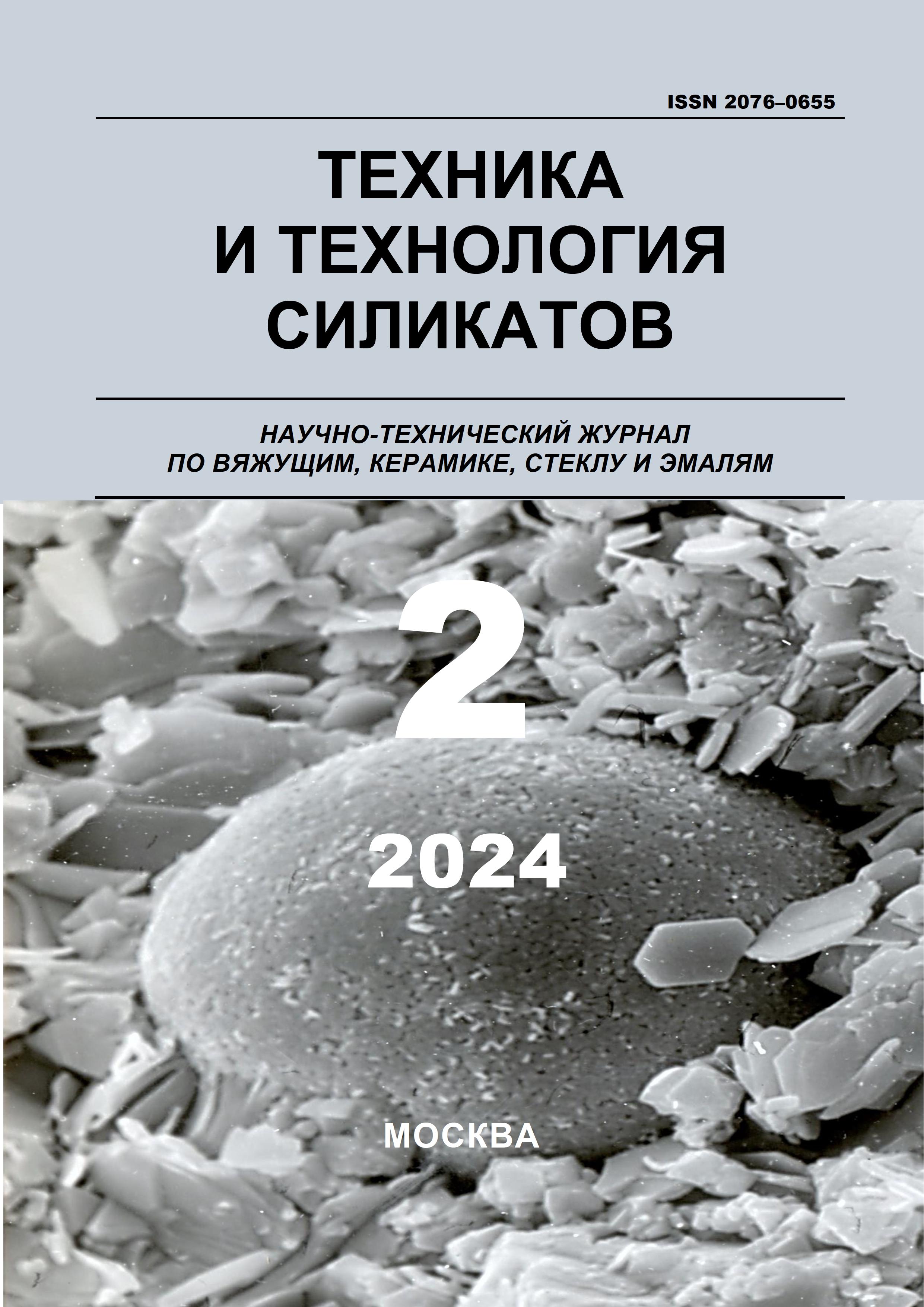graduate student
Vladimir, Vladimir, Russian Federation
employee
Vladimir, Vladimir, Russian Federation
UDC 691.42
CSCSTI 67.09
The main technological aspects of the production of building ceramics are given. Based on the analysis of literary sources, a comprehensive assessment of the feasibility of using construction ceramic waste as a secondary raw material for the production of new building materials was carried out. Based on the research of modern scientists, it has been established that the waste from the scrap of building ceramics is suitable for use as an aggregate, partial replacement of cement and a reactive additive in concretes and mortars. When using scrap of con-struction ceramics as an aggregate, it is recommended to limit the substitution of natural aggregate at the level of 20-30%, together using various additives: plasticizing and improving rheotechnological and physico-mechanical properties of concrete. Finely ground waste from brick scrap has pozzolan activity and, when used as a reactive additive or partial replacement of cement in concretes and mortars, up to 20-25% can improve the structure of cement stone, increase strength, reduce macroporosity and penetration of chloride ions, and increase sul-fate resistance. This kind of binder is prone to a later set of strength compared to Portland cement. In addition, the waste of building ceramics can be used in the production of alkali-activated cements and slag-alkali binders, as well as s raw materials for the production of new bricks or the construction of road surface bases. It has been revealed that the production of building materials and products based on con-struction ceramics waste is a promising direction for the development of construction production. It is possible not only to obtain materials of equal quality to products based on natural raw materials, but also with improved characteristics.
Brick scrap, building ceramics, recycling, concrete aggregate, reactive additive, partial replacement of cement, pozzolan activity.
1. Rappoport P.A. Stroitel'noe proizvodstvo Drevney Rusi (X-XIII v.) [Elektronnyy resurs]. URL: https://tehlib.com/arhitektura/stroitel-ny-e-materialy-izvest-i-ras/ (Data obrascheniya 20.01.2024).
2. Aksenova L.L., Bugaenko L.V., Hlebenskih S.N. Pererabotka i utilizaciya stroitel'nyh othodov dlya polucheniya effektivnyh zelenyh kompozitov. // Sovremennye tendencii tehnicheskih nauk: materialy III Mezhdunarodnoy nauchnoy konferencii, oktyabr' 2014. Kazan'. — 2014. — S. 63-65. EDN: https://elibrary.ru/SXBPVB
3. Popov K.N, Kaddo M.B. Stroitel'nye materialy i izdeliya: Ucheb. – Moskva: Vyssh. shk., 2001. – 367s.: il.
4. Yacenko N.D., Zubehin A.P. Nauchnye osnovy innovacionnyh tehnologiy keramicheskogo kirpicha i upravlenie ego svoystvami v zavisimosti ot himiko-mineralogicheskogo sostava syr'ya. // Stroitel'nye materialy. − 2014. − S.28-31.
5. Zubehin A.P., Yacenko N.D., Filatova E.V., Bolyak V.I., Verevkin K.A.. Keramicheskiy kirpich na osnove razlichnyh glin: fazovyy sostav i svoystva. // Stroitel'nye materialy. − 2010. − S.47-49.
6. Zubehin A.P., Bel'maz N.S., Filatova E.V. Fazovyy sostav keramicheskogo kirpicha iz glin razlichnogo sostava. // Izvestiya vysshih uchebnyh zavedeniy. Severo-Kavkazskiy region. Tehnicheskie nauki. − 2003. − №2. − S.90-92. EDN: https://elibrary.ru/HQVBMH
7. Robayo R.A., Mulford A., Munera J., Gutiérrez R.M.de. Alternative cements based on alkali-activated red clay brick waste. Construction and Building Materials. − 2016. − Vol. 128. − Pp. 163–169. DOI:https://doi.org/10.1016/j.conbuildmat.2016.10.023 EDN: https://elibrary.ru/XZKSIF
8. Stepanova M.P. Tehnologiya stroitel'nyh kompozitov na osnove portlandito-alyumosilikatnoy kontaktno-kondensacionnoy sistemy tverdeniya. avtoref. dis. … kand. tehn. nauk: 05.23.05. Voronezh. − 2013. − 23 s. EDN: https://elibrary.ru/SVFTIN
9. Baranov E.V., Shelkovnikova T.I. Osobennosti polucheniya keramicheskogo kirpicha svetlyh tonov. // Vestnik BGTU im. V.G.Shuhova. − 2016. − №7. − S.18-21. EDN: https://elibrary.ru/WBVYRJ
10. Tang Q., Ziming M., Wu H., Wang W. The utilization of eco-friendly recycled powder from concrete and brick waste in new concrete: A critical review. Cement and concrete composites. − 2020. − No.114. DOIhttps://doi.org/10.1016/j.cemconcomp.2020.103807. EDN: https://elibrary.ru/WPYYXO
11. Fediuk R.S., Ibragimov R.A., Lesovik V.S., Pak A.A., Krylov V.V., Poleschuk M.M., Stoyushko N.Y., Gladkova N.A. Processing equipment for grinding of building powders. IOP Conf. Series: Materials Science and Engineering. − 2018. doihttps://doi.org/10.1088/1757-899X/327/4/042029 EDN: https://elibrary.ru/DZASBR
12. Verigin Yu.A., Verigina Ya.Yu. Teoreticheskie osnovy processov izmel'cheniya veschestva v tehnologii proizvodstva stroitel'nyh materialov. // Polzunovskiy vestnik. − 2013. − №4-1. − S.51-54. EDN: https://elibrary.ru/RRVNID
13. ZhaoY., Gao J., Liu C., Chen X., Xu Z. The partical-size effect of waste clay brick powder on its pozzolanic activity and properties of blended cement. Journal of cleaner production. − 2020. − No.242. DOIhttps://doi.org/10.1016/j.cemconcomp.2020.103807.
14. Xu C., Yang X. Study on Activation of Waste Clay Brick Powder. IOP Conf. Series: Materials Science and Engineering. − 2020. DOhttps://doi.org/10.1088/1757-899X/744/1/012028.
15. Naceri A., Hamina M.C. Use of waste brick as partial replacement of cement in mortar. Waste management. − 2009. − No. 29. − Pp.2378-2384. DOIhttps://doi.org/10.1016/j.wasman.2009.03.026
16. Sokolov A.A. Kompozicionnye shlakoschelochnye vyazhuschie s dobavkami molotogo boya keramicheskogo kirpicha, rastvory i betony na ih osnove: avtoref. diss. … kand. tehn. nauk. 05.23.05. Kazan'. − 2006. − 20 s. EDN: https://elibrary.ru/NJWHZN
17. Murtazaev S-A.Yu., Hadisov V.H., Hadzhiev M.R. Ispol'zovanie othodov proizvodstvennogo braka i keramicheskogo boya kirpicha dlya prigotovleniya legkogo betona // Trudy groznenskogo gosudarstvennogo neftyanogo tehnicheskogo universiteta im. akademika M.D. Millionschikova. − 2011. − № 11. − S. 157–162. EDN: https://elibrary.ru/RDRPQB
18. Hadzhiev M.R. Betonnye kompozity na zapolnitelyah iz keramicheskogo kirpichnogo boya // Evraziyskiy soyuz uchenyh. − 2014. − №5. − S.37–40. EDN: https://elibrary.ru/VXLZVN
19. Hadzhiev M.R. Keramobeton na osnove vtorichnyh zapolniteley iz kirpichnogo boya dlya melkoshtuchnyh stenovyh izdeliy: avtoref. dis. … kand. tehn. nauk: 05.23.05. Groznyy. − 2015. − 25 s. EDN: https://elibrary.ru/ZPQFXP
20. Hadzhiev M.R., Hadisov V.H. Melkoshtuchnye stenovye izdeliya iz legkogo keramobetona dlya ograzhdayuschih konstrukciy zdaniy i sooruzheniy // Vestnik Dagestanskogo gosudarstvennogo tehnicheskogo universiteta. Tehnicheskie nauki. − 2014. − № 4. − S.137–142. EDN: https://elibrary.ru/TEQOCJ
21. Batdalov M.M., Hadisov V.H. Ispol'zovanie kirpichnogo boya dlya proizvodstva stroitel'nyh kompozitov // Vestnik Dagestanskogo gosudarstvennogo tehnicheskogo universiteta. Tehnicheskie nauki. − 2011. − № 23. − S.102-105. EDN: https://elibrary.ru/TGZPSV
22. MurtazaevS-A.Yu., Saydumov M.S., Hadzhiev M.R., Hadisov V.H. Yacheistyy keramobeton na osnove zapolniteley iz vtorichnogo syr'ya // Vestnik Dagestanskogo gosudarstvennogo tehnicheskogo universiteta. Tehnicheskie nauki. − 2014. − №3 (34). − S.74-81.
23. Dina M. Sadek. Phisico-mechanical properties of solid cement bricks containing recycled aggregates. Journal of advanced research. − 2012. – No. 3. − Pp.253-260. DOIhttps://doi.org/10.1016/j.jare.2011.08.001.
24. Debieb F., Kenai S. The use of coarse and fine crushed bricks as aggregate in concrete. Construction and building materials. − 2008. − No. 22(5). − Pp.886-893. DOIhttps://doi.org/10.1016/j.conbuildmat.2006.12.013.
25. Aliabdo A.A. Abd-Elmoati M., Hassan H.H. The use of crushed clay bricks in the concrete industry. Alexandria Engineering Journal. − 2014. − Vol. 53. − No. 1. − Pp. 151–168. DOIhttps://doi.org/10.1016/j.aej.2013.12.003.
26. Romanenko I.I. Primenenie loma glinyanogo kirpicha v kachestve krupnogo zapolnitelya betonov. // Inzhenernyy vestnik Dona. − 2022. − №12. EDN: https://elibrary.ru/AXKBPC
27. Gonzalez J.S., Gaillarre F. L., Perez S.L.S., Ros P.S., Lopez M.A.S. Influence of recycled brick aggregates on the properties of structural concrete for the manufacture of precast prestressed beams Construction and Building Materials. − 2017. − Vol. 149. − Pp. 507-514.
28. Ahmad S.I., Hossain M.A. Water permeability characteristics of normal strength concrete made from crushed clay bricks as a coarse aggregate. Advances in Materials Science and Engineering. − 2017. − Pr. 109-119. DOIhttps://doi.org/10.1155/2017/7279138.
29. Alashanov. A.H. Polifunkcional'nye stroitel'nye kompozity na osnove tehnogennogo syr'ya: avtoref. dis. … doktora tehn. nauk: 2.1.5. Groznyy. − 2023. − 41s.
30. Brito J., Pereira A.S., Correia J.R., Mechanical behaviour of non-structural concrete made with recycled ceramic aggregates. Cement and Concrete Composites. − 2005. − No. 27. − Pp. 429–433. DOIhttps://doi.org/10.1016/j.cemconcomp.2004.07.005.
31. Cachim P. B. Mechanical properties of brick aggregate concrete. Construction and Building Materials. − 2009. − No. 23. − Pp. 1292–1297. DOIhttps://doi.org/10.1016/j.conbuildmat.2008.07.023.
32. Salahaldein A. Properties of concrete using crushed brick as coarse aggregate. International Journal of Advances in Mechanical and Civil Engineering. − 2019. − Vol. 3. − Pp.44-47.
33. Torkittikul, P., Chaipanich, A. Utilization of ceramic waste as fine aggregate within Portland cement and fly ash concretes. Cement and Concrete Composites. − 2010. − No.32. − Pp. 440–449. DOIhttps://doi.org/10.1016/j.cemconcomp.2010.02.004.
34. Uspanova A.S., Islamov A.A., Kurazov M.S., Inorkaev I.S-A., Vahazhi H-M.M. Stroitel'nye shtukaturnye smesi na osnove melkoy frakcii produkta drobleniya kirpichnogo boya i proizvodstvennogo braka kirpicha // Fundamental'nye osnovy stroitel'nogo materialovedeniya. Sbornik dokladov mezhdunarodnogo onlayn kongressa. − Belgorod. − 2017. − S. 906–913. EDN: https://elibrary.ru/YLPFRB
35. Silva J., Brito de J., Veiga R. Incorporation of fine ceramics in mortars. Construction and Building Materials. − 2009. − Vol.23. − Pp.556–564. DOIhttps://doi.org/10.1016/j.conbuildmat.2007.10.014.
36. Romanenko I.I., Petrovnina I.N., Elichev K.A, Romanenko M.I. Probuzhdenie gidravlicheskoy aktivnosti napolniteley i zapolniteley iz loma glinyanogo kirpicha // Inzhenernyy vestnik Dona. − 2022. − №11(95). − S.563–572. EDN: https://elibrary.ru/NDFRPP
37. Goncalves J.P., Tavares L.M., Toledo Filho R.D., Fairburn E.M.R. Performance evaluation of the effectiveness of cement slurries modified with metakaolin or ground bricks. Building and Building Materials. − 2009. − Vol. 23. − No.5. − Pp.1971-1979. DOIhttps://doi.org/10.1016/j.conbuildmat.2008.08.027.
38. Ge Z., Gao Z., Sun R., Zheng L. Mix design of concrete with recycled clay-brick-powder using the orthogonal design method. Construction and building materials. − 2012. − No.31. − Pp.289–293. DOIhttps://doi.org/10.1016/j.conbuildmat.2012.01.002.
39. Volzhenskiy A.V., Burov Yu.S., Kolokol'nikov V.S. Mineral'nye vyazhuschie veschestva: Ucheb. – Moskva: Izdatel'stvo literatury po stroitel'stvu, 1966. – 406 s.
40. Toledo Filho R.D., Gonçalves J.P., Americano B.B., Fairbairn E.M.R. Potential for use of crushed waste calcined-clay brick as supplementary cementitious material in Brazil. Cement and concrete research. – 2007. – No.37. – Pp.1357-1365. DOIhttps://doi.org/10.1016/j.cemconres.2007.06.005.
41. O’Farrell M., Sabir B.B., Wild S. Strength and chemical resistance of mortars containing brick manufacturing clays subjected to different treatments. Cement and concrete composites. – 2006. No.28. – Pp.790-799. DOIhttps://doi.org/10.1016/j.cemconcomp.2006.05.014.
42. Shao J., Gao J., Zhao, Y., Chen X. Study on the pozzolanic reaction of clay brick powder in blended cement pastes. Construction and Building Materials. – 2019. – No.213. – Pp.209–215. doihttps://doi.org/10.1016/j.conbuildmat.2019.03.307.
43. Liu C., Liu H., Wu J. Effect of Recycled Mixed Powder on the Mechanical Properties and Microstructure of Concrete. Journal of renewable materials. – 2022. – Vol.10. – No.5. – Pp.1397-1414. DOIhttps://doi.org/10.32604/jrm.2022.018386. EDN: https://elibrary.ru/PMPFMO
44. Liu, S., Dai, R., Cao, K. Zhiyang G. The Role of Sintered Clay Brick Powder During the Hydration Process of Cement Pastes. Iranian Journal of Science and Technology - Transactions of Civil Engineering. – 2017. – No.41. – Pp.159–165. DOIhttps://doi.org/10.1007/s40996-017-0049-0.
45. Fomenko A.I., Gryzlov V.S., Kaptyushina A.G. Othody keramicheskogo kirpicha kak effektivnyy komponent stroitel'nyh kompozitov. // Sovremennye naukoemkie tehnologii. – 2016. – №2. – S.260-264. EDN: https://elibrary.ru/VOIDLR
46. Podol'skiy V.P., Matvienko F.M., Bykova A.A., Avdeeva N.Yu. Razrabotka tehnologiy primeneniya othodov ot snosa zdaniy dlya ustroystva ukreplennyh cementom osnovaniy avtodorog s ispol'zovaniem modifikatora MADOR. // Nauchnyy zhurnal stroitel'stva i arhitektury. – 2023. – №4. – S.156-162. DOI: https://doi.org/10.36622/VSTU.2023.72.4.013; EDN: https://elibrary.ru/ERLXYG
47. Gubskaya A.G., Gapotchenko A.P., Senatova K.S., Oleckaya L.P. Vozmozhnost' zameny prirodnogo schebnya i graviya vtorichnym syr'em pri stroitel'stve i remonte dorog. // Dorozhnoe stroitel'stvo i ego inzhenernoe obespechenie: materialy Mezhdunarodnoy nauchno-tehnicheskoy konferencii. Belorusskiy nacional'nyy tehnicheskiy universitet. Minsk. – 2020. – S. 227-234.









